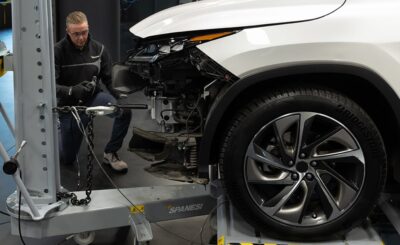When technicians begin diagnosing windshield washer pump issues, the first step often involves using diagnostic scanners and multimeters. Diagnostic scanners connect to the vehicle’s onboard computer system to check for any stored fault codes related to the washer system. These fault codes help pinpoint electrical or communication problems that might affect the pump’s operation. Multimeters are indispensable for measuring electrical parameters such as voltage, resistance, and current flow in the pump’s wiring circuit. By using these tools, technicians can quickly determine whether power is reaching the pump and if the wiring and connectors are functioning properly.
Specialized Electrical Testers
Beyond standard multimeters, repair professionals use specialized electrical testers designed for automotive applications. These include circuit testers, test lights, and clamp meters that can assess current draw without disconnecting components. For instance, a clamp meter can measure the amperage the washer pump draws while operating, helping identify issues like motor wear or internal shorts. Continuity testers verify that wiring harnesses and connectors are intact, ensuring there are no breaks or corrosion affecting pump performance. These tools offered by the BMW Repair in Oceanside, CA based services are essential for troubleshooting complex electrical problems and avoiding unnecessary part replacements.
Fluid Pressure and Flow Testing Equipment
Proper washer pump function depends not only on electrical health but also on the mechanical ability to deliver washer fluid to the windshield. To evaluate this, technicians use fluid pressure and flow testing equipment that simulates pump operation in controlled settings. This specialized apparatus measures the pressure generated by the pump and confirms fluid delivery through the hoses and nozzles. If pressure is below manufacturer specifications, it indicates internal pump wear or blockage. These tests ensure that the pump can provide adequate fluid flow for effective windshield cleaning, a critical factor for driver safety.
Removal and Installation Tools
Physically accessing and replacing the washer pump requires a set of hand tools designed for automotive repair. Common tools include socket wrenches, pliers, trim panel removers, and screwdrivers that help remove panels, secure fasteners, and disconnect hoses safely. Because washer pumps are often mounted in tight or concealed areas near the fluid reservoir, specialized swivel sockets or extension bars may be used to reach difficult fasteners. Additionally, quick-disconnect pliers help detach fluid lines without damaging fragile fittings. These precision tools allow technicians to complete pump replacements efficiently while preventing collateral damage to surrounding components.
Cleaning and Maintenance Tools
After repair or replacement, maintenance tools are used to clean the washer system and ensure optimal operation. Compressed air blowers help clear clogged nozzles and fluid lines of debris, while cleaning brushes remove sediment buildup from reservoirs and hoses. Technicians may also use flushing kits that circulate cleaning solutions through the system to eliminate contaminants that could impair pump performance. Proper cleaning extends the pump’s lifespan and prevents future malfunctions. These maintenance tools are part of comprehensive service protocols that professional repair centers follow to guarantee long-term reliability of the windshield washer system.








